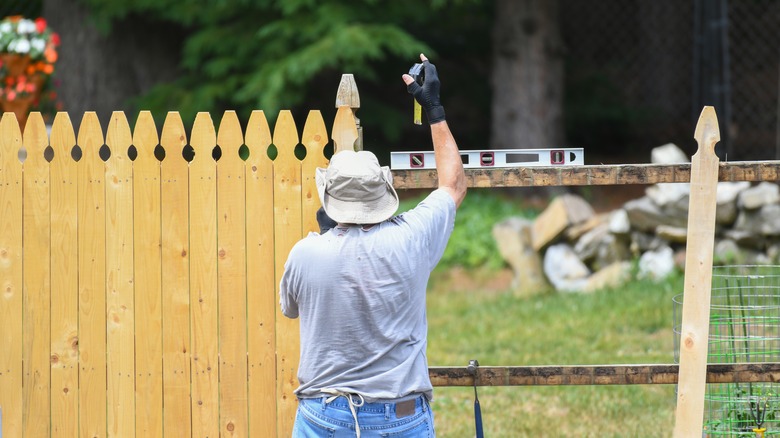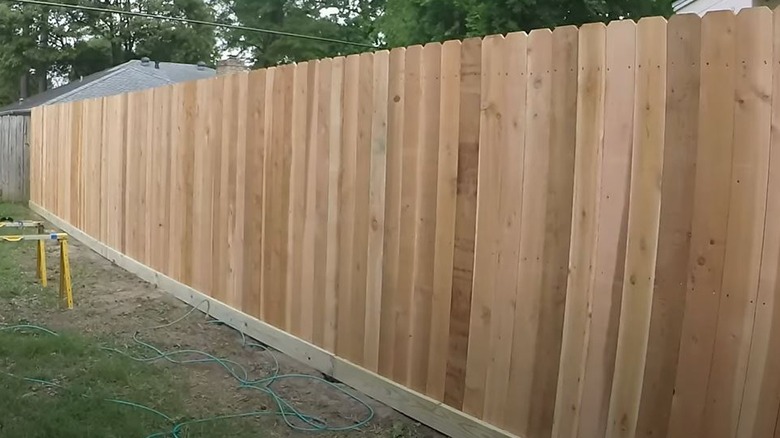Why You Should Leave A Gap At The Bottom When Installing A Wooden Picket Fence
Millions of homeowners opt for wooden picket fences over other styles because they're durable, they offer privacy, and they enhance the appearance of a yard. If you have plans to add one to your property for these reasons, it's easy to create an affordable and professional looking wood fence yourself. Although labor-intensive, many people who have installed a wood fence before would say that it isn't complicated, but there are several do's and don'ts to consider. One of the most important details involves the bottom of the pickets. When installing a wood fence, you should always leave a gap at the bottom of the fence to prevent rot.
This doesn't necessarily mean that you have to leave the gap exposed. After all, a large enough gap could impede the overall privacy goal of the fence. Plus, pets might attempt to crawl or dig underneath, putting themselves at risk, and a large gap may not keep neighbors' dogs from damaging your lawn. Professional installers typically add horizontal boards called "rot boards" at the bottom of the vertical wooden pickets to close the gap. If you don't want to install these boards, you could add a lattice or plant some hedges along the fence instead to close the gap.
Leaving a gap under a wooden fence helps prevent wood rot
Any wood left outdoors can rot over time if it has frequent contact with moisture from the ground. This decay is much more likely to occur after periods of heavy rainfall. Leaving a gap at the bottom of a picket fence prevents this physical wood-to-ground contact. How big should the gap be? Individual projects may vary, but fence contracting professionals generally recommend between 2 and 5 inches as the standard clearance. In general, your installed wooden pickets should not touch the ground during installation to prevent wood rot, but the gap under the pickets can be filled by pressure-treated rot boards.
Remember, rot boards — also known as kick boards — are placed at the bottom of the fence to close the gap between the fence and the soil. As a result, these boards will make some contact with the ground, but they're generally not made from the same wood as the vertical pickets. Rot boards are typically made of pressure-treated pine, making them resistant to rot and decay. Plus, these boards are absorbent and can help prevent the pickets from soaking up too much moisture. If rot boards ever need to be replaced, they cost less than replacing the pickets. If you dislike the look of a rot board and you're not concerned about pets escaping, explore hedges you can plant for privacy.

